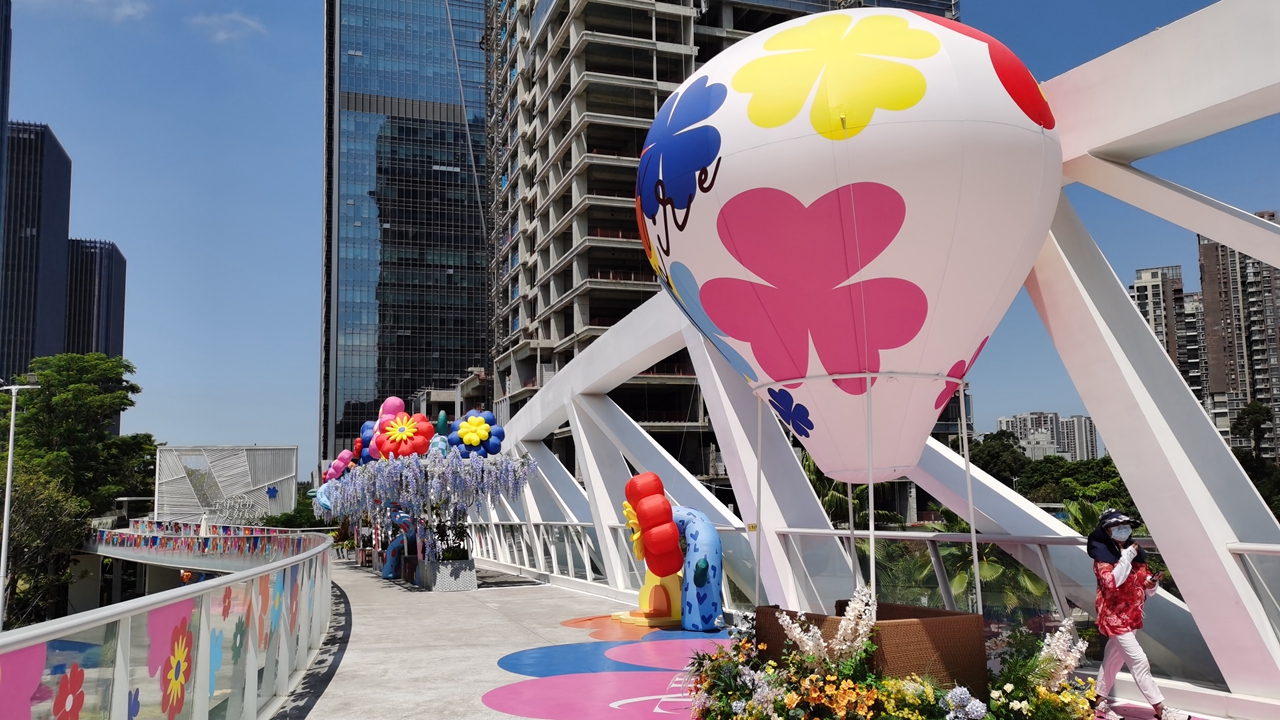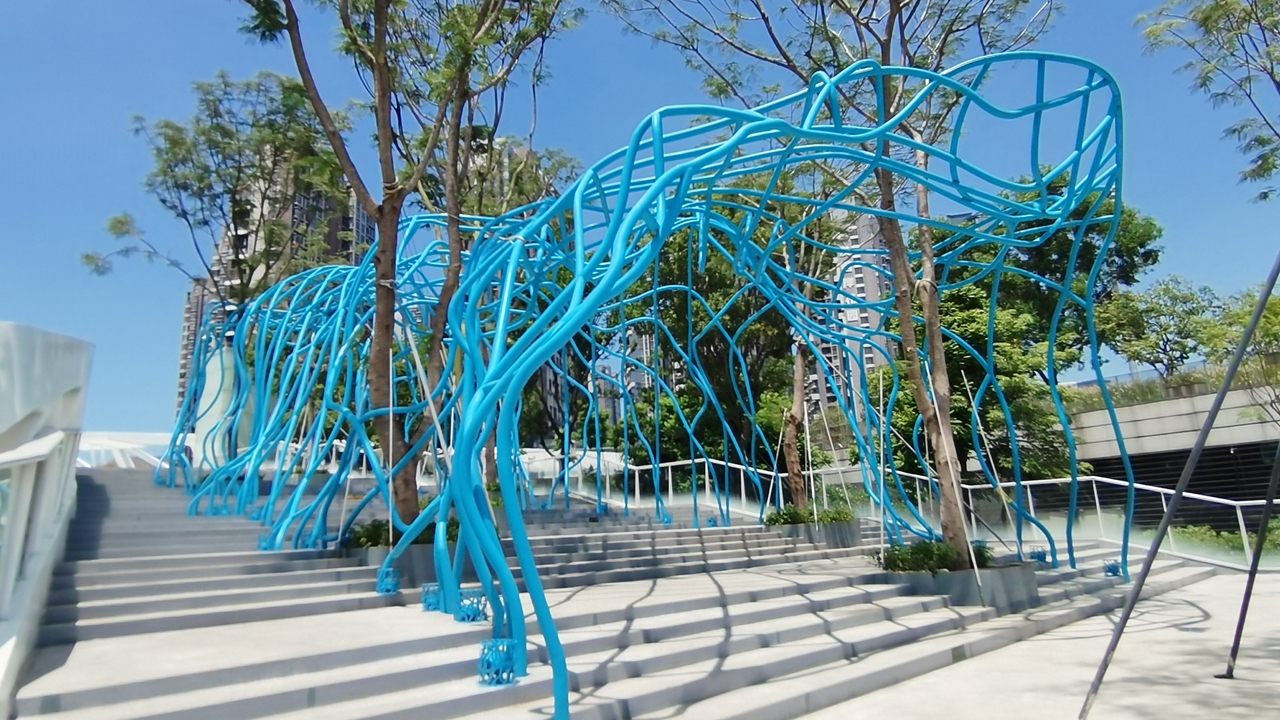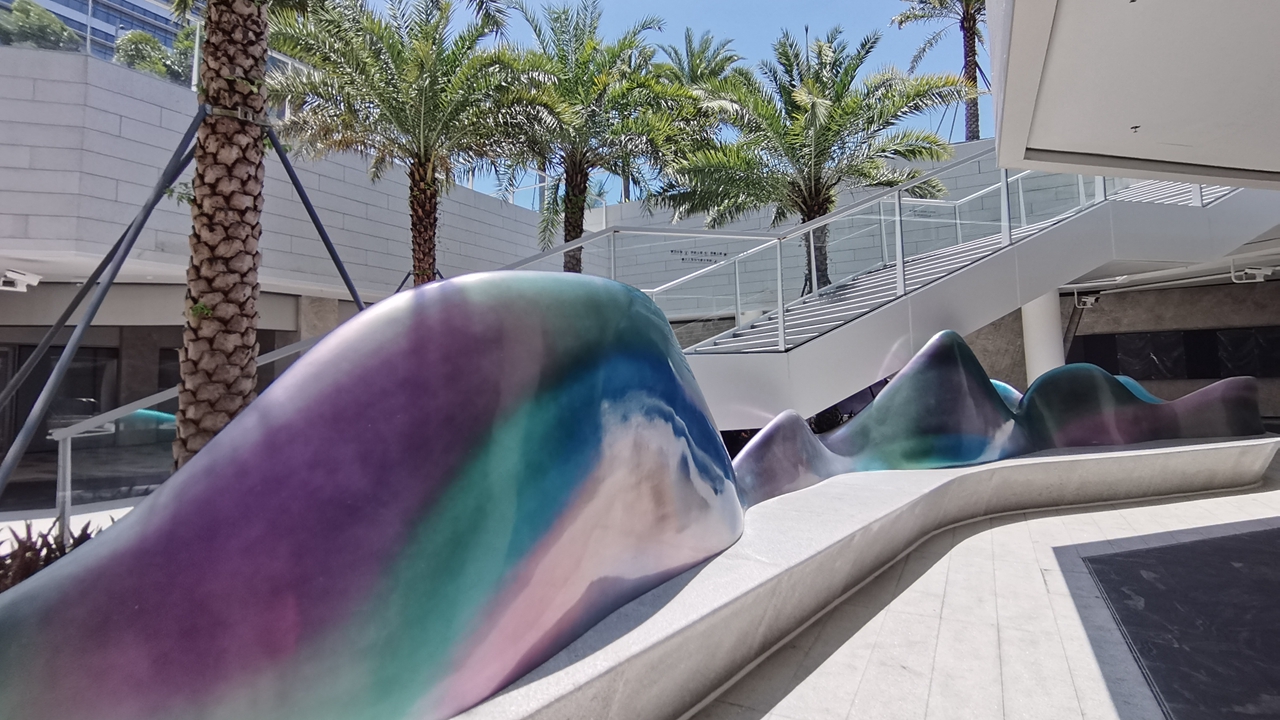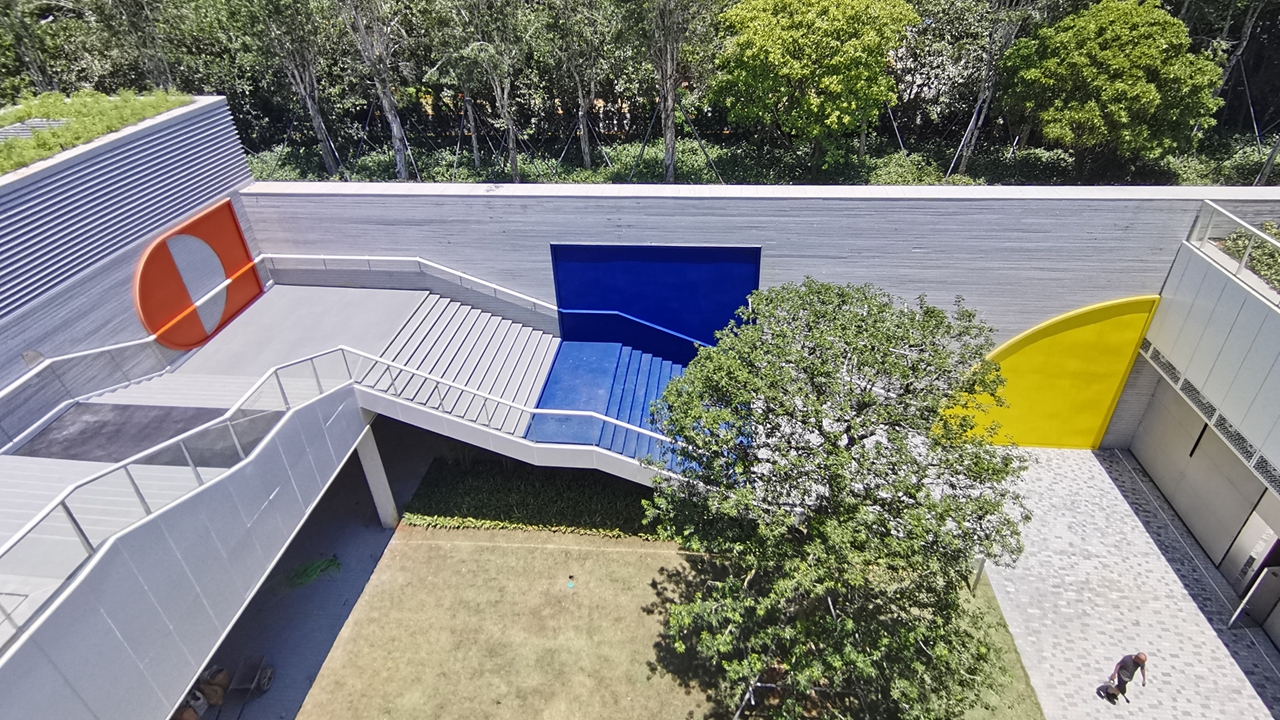Ramble on Baywalk
A dusk walk on the 2 km-long Baywalk bridge which is elevated above the streets in Bao’an District is an ideal option for locals to relieve summer heat after finishing a day’s work.
The bridge, on a par with the High Line Park in New York City, spans over six major roads in Bao’an and links nearby buildings including the Bao’an Stadium, OH Bay and several office buildings with street-level restaurants and cafes.

Inflatable installations decorate Zone A of the Baywalk bridge in Bao’an District. Photos by Cao Zhen
From Metro Line 11’s Bao’an Station Exit C, you can start your stroll from the north part of the bridge (Zone A), which has been decorated with colorful flower installations. Then, head all the way south (Zones B-G) and finally you will reach JW Marriott Hotel Shenzhen Bao’an and OH Bay at the end of the bridge (Zone H).
There are benches and shades on some sections over the bridge and during your stroll, you can take time to explore the underground and street-level spaces where there are lush horticulture, rain gardens, resting squares and art installations.

Wang Luyan’s sculpture in Zone A.
Artist Wang Luyan put net-shaped blue installations in Zones A and H of the bridge to symbolize the interconnectivity in our life as we currently stand in a fast-paced digital era. Frank Havermans’ sculpture in Zone A is inspired by Terminal 3 of the Shenzhen Bao’an International Airport. BEAU Architects placed a viewing platform in Zone B for visitors to view the city from a different angle.

Leon Xu’s installation in Zone C.
Leon Xu’s glass and steel installation in Zone C is a chic shade for visitors and it creates a world of light and shadows. Malaysian artist H.H. Lim’s steel tree in Zone D symbolizes ecology and vitality in Bao’an.

Wang Jinsong’s installation in Zone F.
Wang Jinsong’s installation in Zone F serving as a bench back is like winding mountains in traditional Chinese ink paintings. Perry Bai drew an abstract image incorporating a star atlas and the Baywalk map on the ground in Zone G to reflect efficient accessibility within Shenzhen.

Yang Yong’s color-block artwork in Zone H.
Yang Shaobin’s tree of road signs in Zone H also embodies Baywalk’s connectivity value. Yang Yong’s color blocks on a wall in Zone H symbolize the urban development of Bao’an. Cheng Hang’s shining sculpture in Zone H is a downsized Baywalk map, meaning the multi-functional bridge is like a river running through central Bao’an.
If you don’t want to get lost in the 2 km-long journey, you’d better just stick to walking on the continuous bridge to enjoy the city view. You can get off the bridge any time, as stairs and road signs are everywhere for pedestrians to reach nearby buildings such as the Bao’an Library, Bay Opera of Shenzhen and St. Regis Shenzhen Bao’an (to open soon).
If you have mobility concerns, elevators have also been installed on the bridge and will be put in use soon.